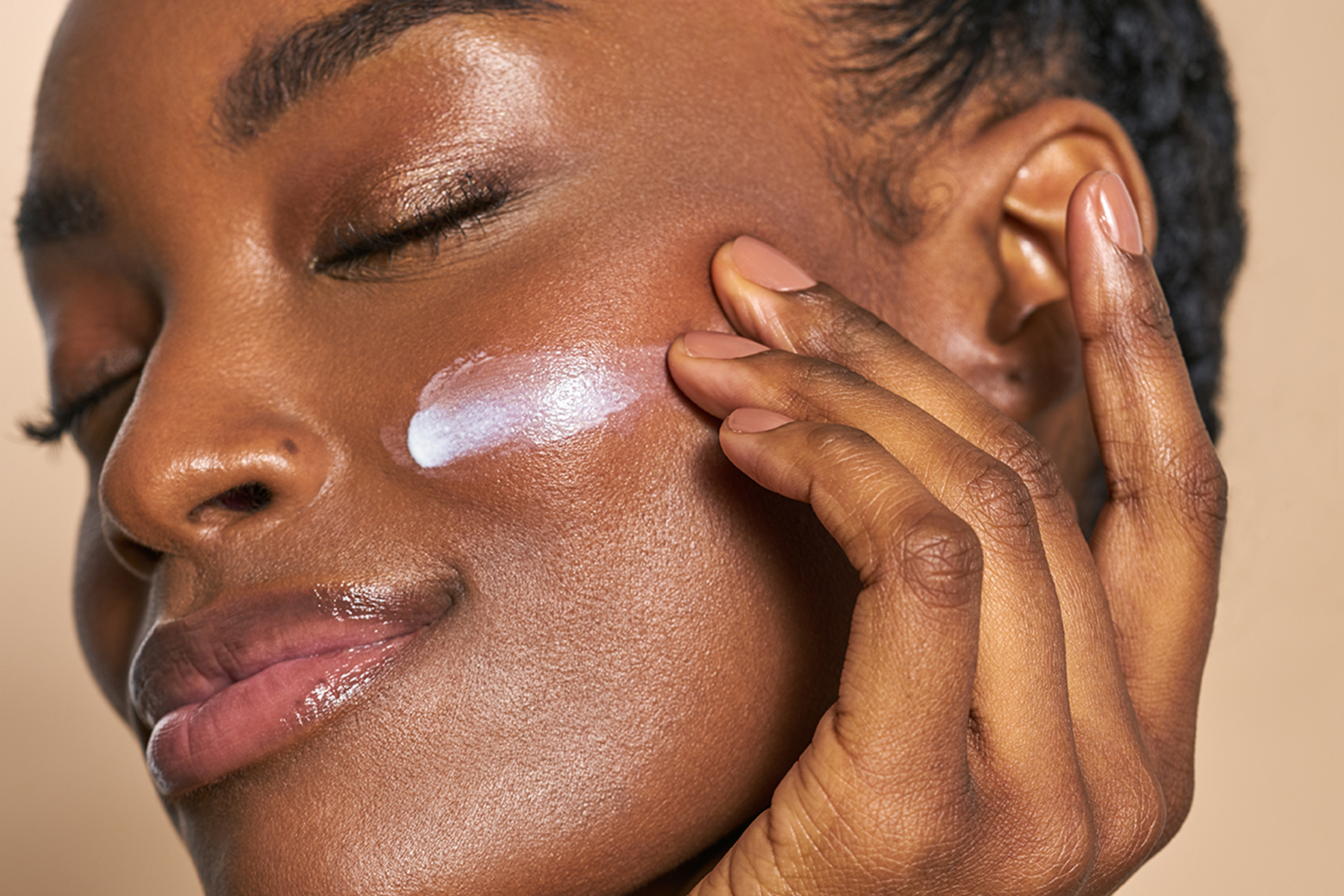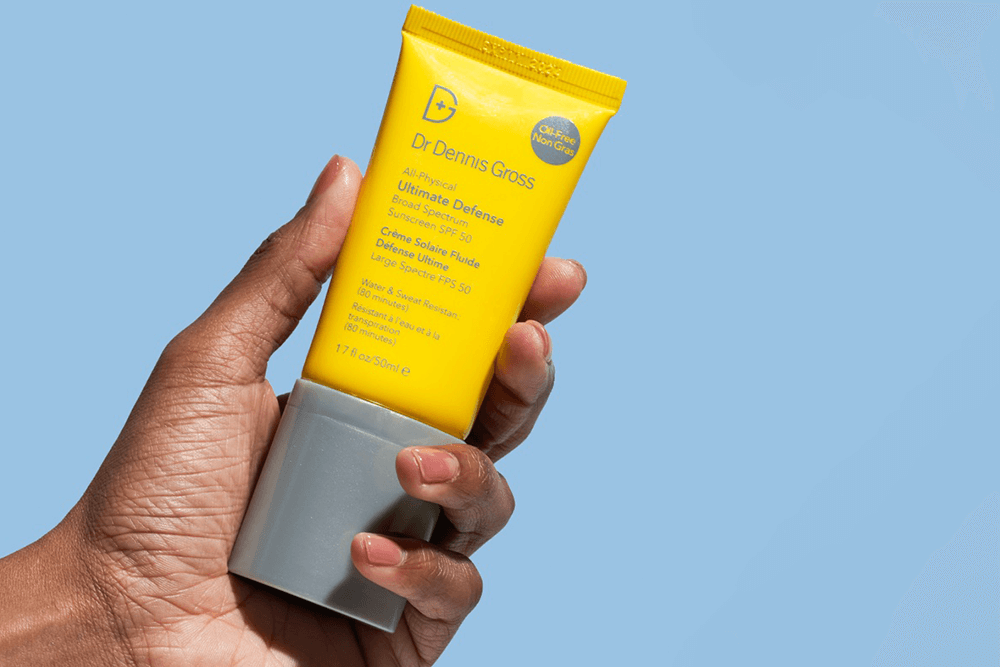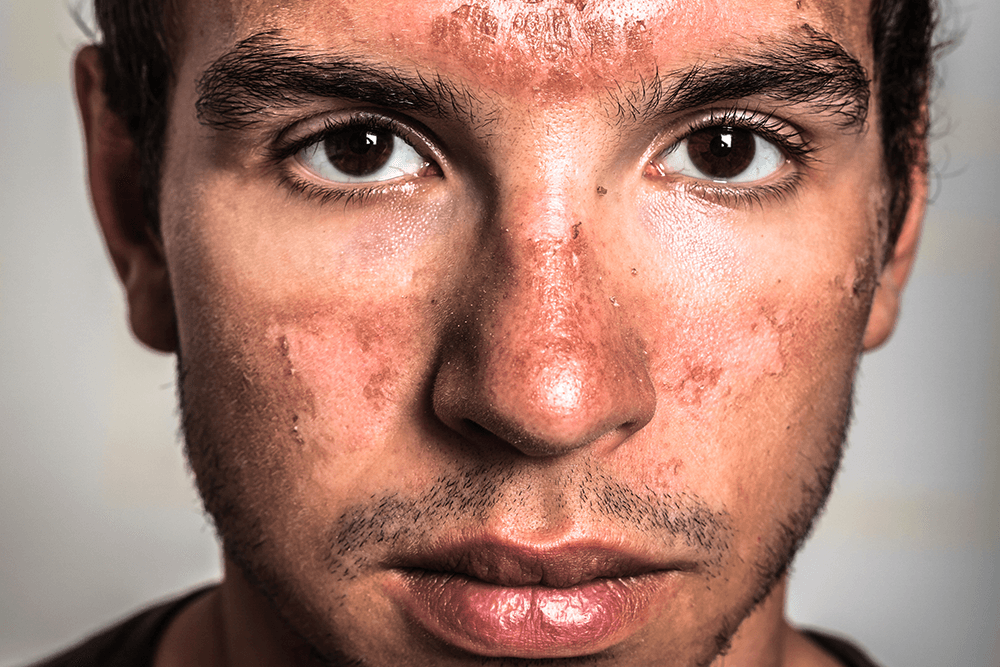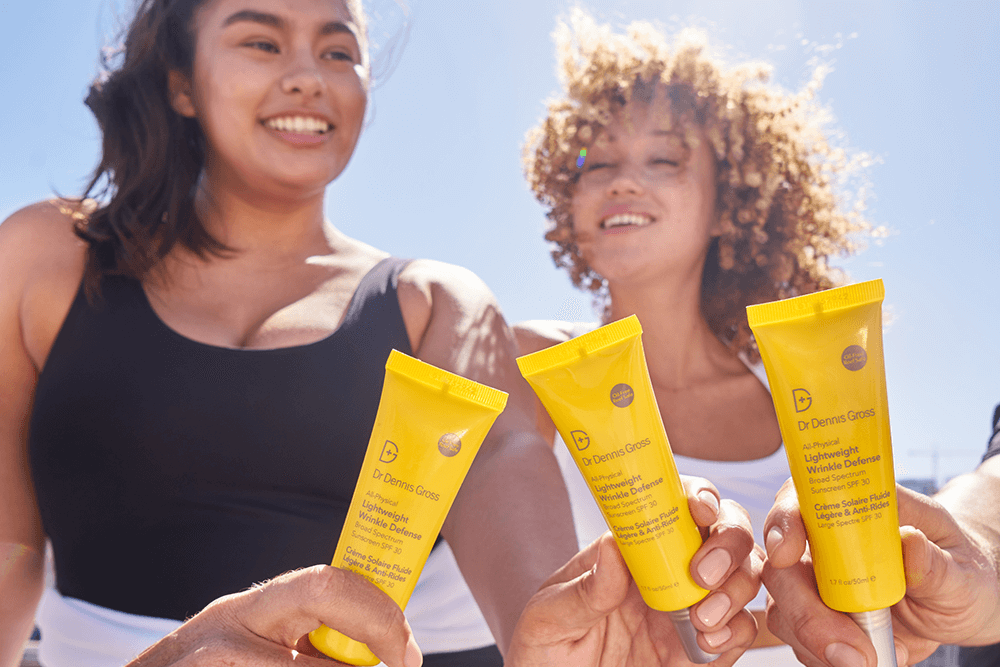The+Source
You already know how damaging UV rays can be to your adult skin. It’s not a huge leap to imagine all the harm they can inflict on the skin of little ones. We know because we think about it a lot.
The team at Dr. Dennis Gross Skincare is filled with parents (our founders have four kids themselves!), so we’re just as concerned with the health of children’s skin as we are with that of adults. As any dermatologist will tell you, one really bad sunburn (think blistering) in childhood can nearly double that person’s chance of developing melanoma (the deadliest form of skin cancer) later in life.
With the promise of warmer weather on the horizon and many experts predicting people will be spending more time outdoors than ever before, it’s important that you have a sun protection plan in place for your entire household – especially for those too young to look after themselves.
Babies and sunscreen
The American Academy of Dermatology (AAD) recommends infants under six months completely avoid both the sun’s rays and sunscreen itself (their skin is ultra-sensitive). Instead, always keep them in the shade and dressed in protective clothing (long sleeves and pants), a wide-brimmed hat, and sunglasses with UV protection.
If you see your baby’s skin turning red, take them indoors immediately. In cases where sun exposure absolutely can’t be avoided for a baby under six months, it’s OK to apply a minimal amount of sunscreen (more on that below) every two hours.
What kind of sunscreen is good for kids?
According to the AAD, every human needs to apply a broad-spectrum sunscreen with an SPF of at least 30 daily. If your child is six months or older, that includes them. Your best bet is a non-nano mineral sunscreen (also called a physical sunscreen). These are made with either zinc oxide or titanium dioxide. These types of SPF products are preferable for two main reasons. The first is that physical blocks are less irritating than their chemical counterparts. Children’s skin (even past the six-month mark) is still extremely sensitive. Not to mention that if you’ve ever had chemical sunscreen run into your eyes, you know that it stings.
So, unless your kid never rubs their face or gets wet (and if so, we’d like to meet that child), save both yourselves the pain and heartache by sticking with zinc oxide or titanium dioxide. But if that wasn’t enough of a reason to steer clear of chemical screens, researchers are now sounding warning bells on some chemical sunscreen ingredients (like oxybenzone, avobenzone, homosalate, and octocrylene), as studies have shown those ingredients can be absorbed into the bloodstream after just one application. Until more research is done (and since there are excellent alternatives), prudent doctors are suggesting their patients (young and old) opt for physical SPFs.
How do you apply sunscreen?
Start at least 30 minutes before you or your child plan to be outside. This will give the product time to bind to their skin. The best practice is to apply sunscreen to the entire body (even the portions covered by clothing) since skin might be exposed later in the day if clothing shifts or is removed.
But it’s especially important to remember areas that are frequently uncovered regardless: the tops of the feet and ears and the backs of the neck and knees. In terms of the quantity of lotion you should use on a single child-size body, the AAD suggests adults use one ounce (equivalent to a shot glass) on their own bodies. For your mini-me, aim for half that amount. (Check out our other post about sunscreen application.)
How often do you reapply sunscreen?
More than you probably think. “Waterproof” sunscreen is a myth on par with guilt-free dessert: It simply doesn’t exist. As soon as your kid comes out of the pool or if they’ve been running around and sweating heavily, their sunscreen needs to be reapplied. And even if you’re not spending a day at the beach, after two hours, it’s time for another coat of sunscreen, regardless.
If that sounds like a lot, it is. According to the Skin Cancer Foundation, if they’re applying and reapplying correctly, each member in a family of four should go through one four-ounce bottle of sunscreen during a long day spent outside.
Ugh—still ended up with a burn
Sometimes even the best-laid plans can go awry. In these instances, plain, tepid-water baths will help bring down the heat. Follow with a light moisturizer, but avoid ones containing alcohol (it overcools skin), antihistamine, or medication, such as hydrocortisone or benzocaine. (In fact, the AAD suggests skipping any products with “-caine” in the name when treating a sunburn.)
If the burn blisters, it’s an indication of a second-degree, and you need to make an appointment with your pediatrician right away. The same goes if your child has a fever, chills, or lethargy. If your child is under the age of one and gets a burn of any sort (mild or severe), call your doctor immediately.






